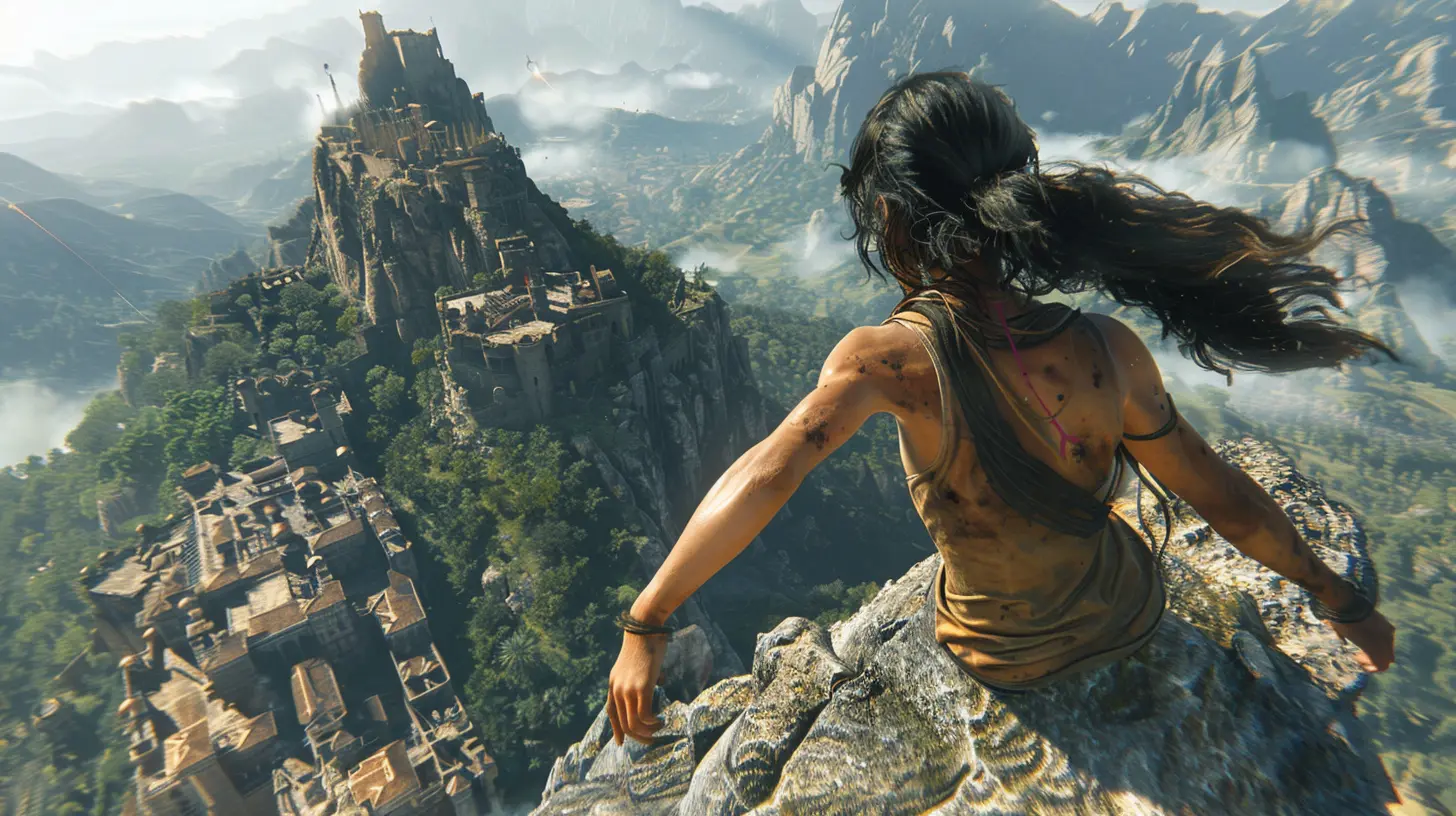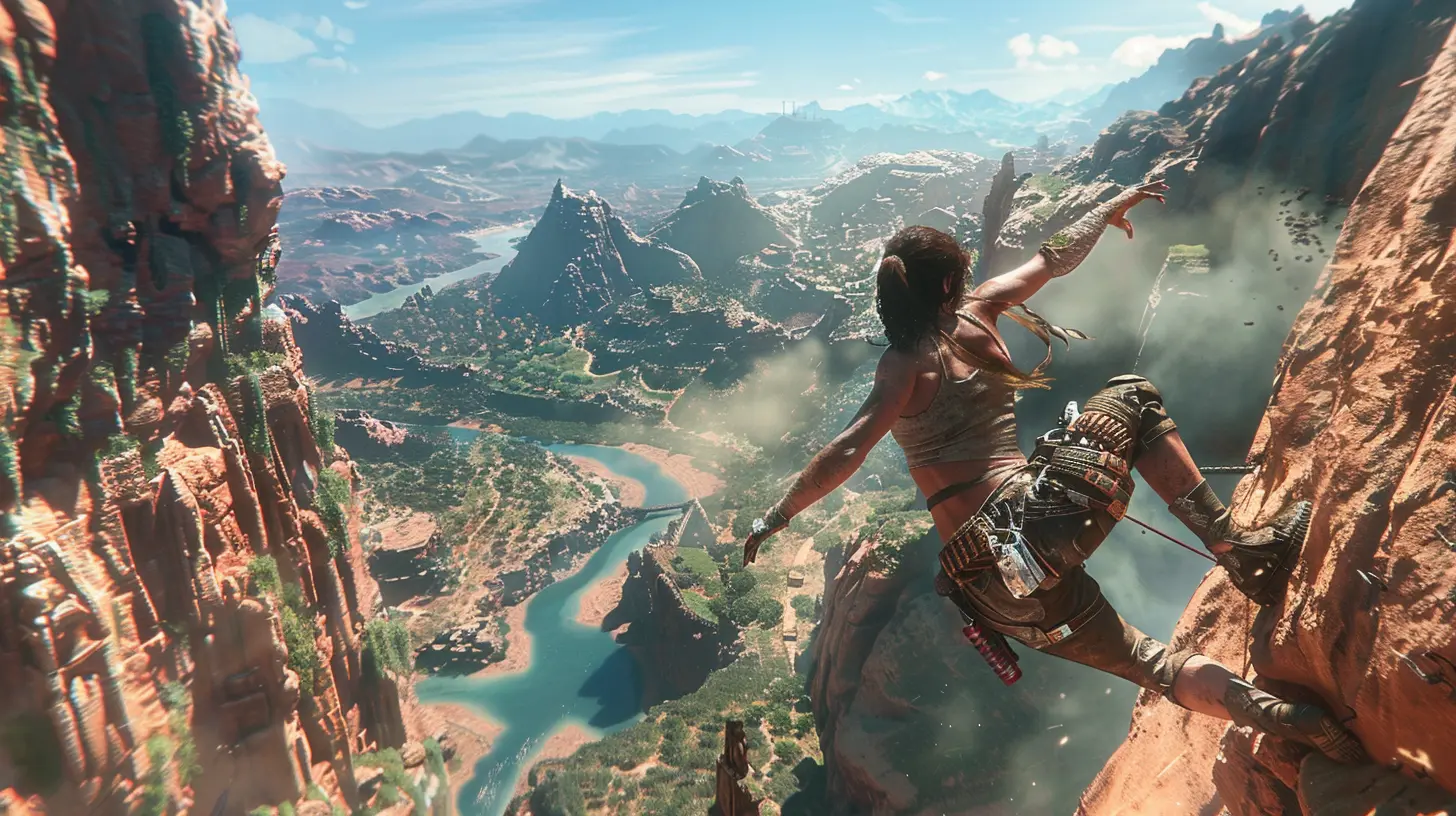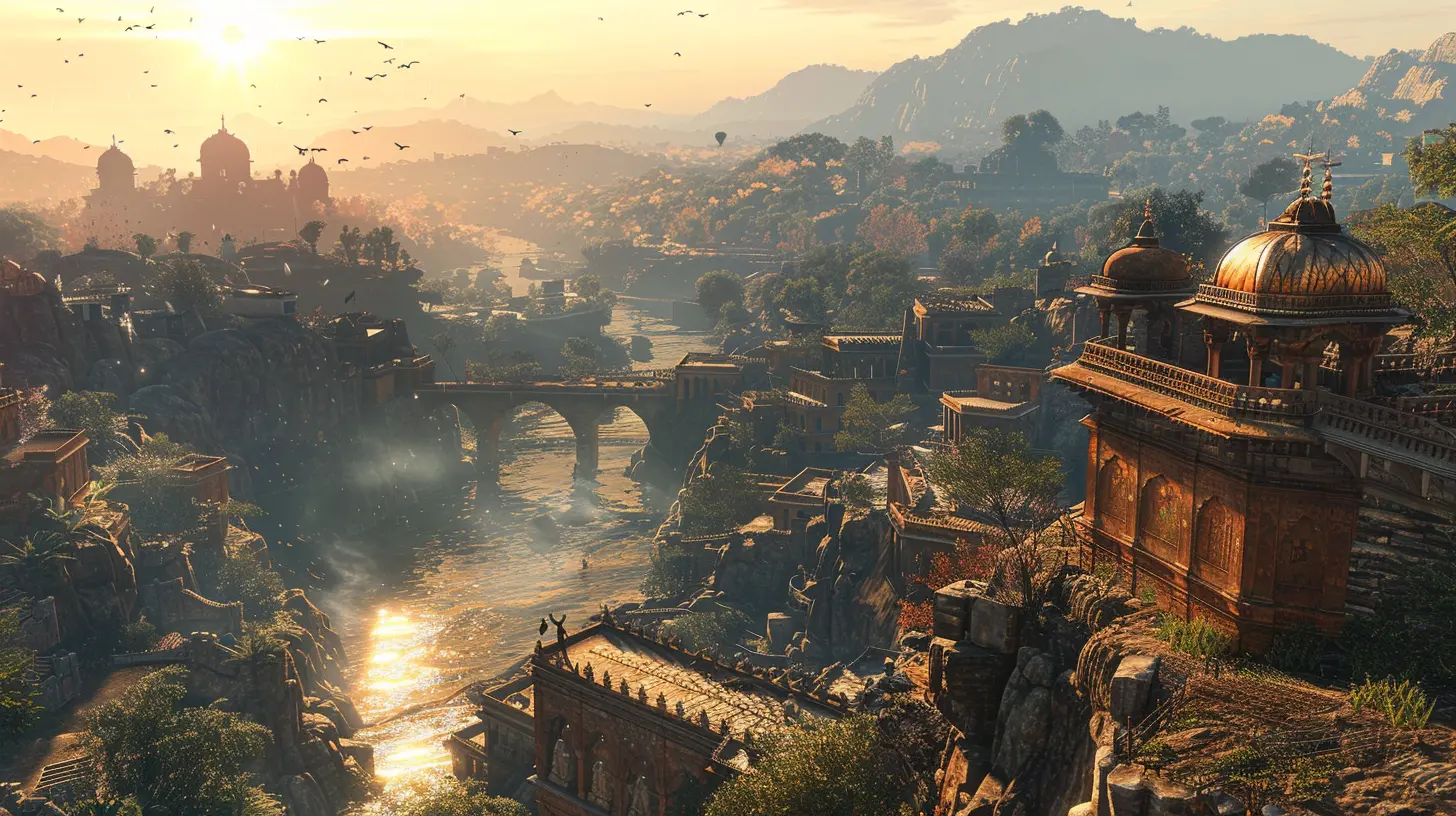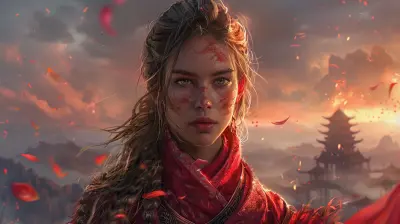14 March 2025
Have you ever played an open-world game and paused for a moment to marvel at how seamless and engaging the movement feels? That sense of total freedom—being able to explore towering mountains, deep caverns, and sprawling ruins—has a lot to do with the traversal mechanics. These mechanics aren’t just fancy tools; they’re what make a game world feel alive, immersive, and, frankly, worth losing hours to.
Let’s dive into some of the most innovative traversal mechanics in open-world games: grappling, climbing, and gliding. These aren’t just methods of getting from Point A to Point B. They’re the secret sauce that adds depth, excitement, and even a sprinkle of adrenaline to your gaming experience.
Grappling: The Swinging Sensation
What’s more exhilarating than swinging from one cliff to another, dodging enemies, or scaling towers that seem almost out of reach? Grappling mechanics have become a staple in open-world games, and for good reason. They blend utility with sheer fun.The Appeal of Grappling Hooks
Okay, let’s be real. A grappling hook instantly makes any game more exciting. Think of it as the Swiss Army knife of traversal tools. It’s not just about reaching elevated areas; it’s about the speed, the flow, and the fun factor. Whether you’re zipping across a canyon or yanking yourself up to a hidden sniper point, the grappling mechanic is all about keeping the action fluid.Take Just Cause 4, for example. Rico’s grappling hook isn’t just a gadget—it’s a way of life. Whether you’re pulling objects together, launching into the air, or tethering enemies in hilarious ways, it’s a mechanic that turns chaos into an art form. Similarly, Batman: Arkham Knight uses the grappling hook to reinforce Batman’s stealthy, acrobatic persona. You can zip to gargoyles, scale buildings, and disappear into the shadows in seconds.
Why It Works So Well
Grappling works because it bridges the gap between the grounded and the fantastical. It’s practical, but it also feels like something out of a superhero movie. The best part? It puts you in control of the verticality of a game's environment. No longer are tall mountains or skyscrapers merely part of the background—they’re challenges waiting to be tackled.
Climbing: Conquering the Vertical World
If grappling feels like a rush of adrenaline, climbing is more meditative. It’s the slow, deliberate process of conquering a massive world one handhold at a time. Some might call it tedious, but when done right, climbing is incredibly rewarding.The Art of Climbing
Let’s talk about The Legend of Zelda: Breath of the Wild. Here’s a game where climbing isn’t just a feature—it’s a core mechanic. Almost everything you see can be climbed, provided you have enough stamina. Climbing in Breath of the Wild doesn’t just give you access to new areas; it gives you a sense of accomplishment. Reaching the top of a daunting cliff feels like you’ve truly conquered something, and the expansive views are your reward.Then there’s Assassin’s Creed, a franchise that practically perfected the climbing formula. Whether you’re scaling ancient pyramids in Origins or navigating the dense urban landscapes of Unity, climbing feels intuitive and satisfying. The series’ parkour-like mechanics make even the tallest structures seem like playgrounds.
Challenges and Rewards
Climbing isn’t just about reaching the top—it’s about the journey. Think of each ledge or handhold as a mini-puzzle. How do you get from here to there? What’s the safest route? Sometimes, the game ups the stakes with environmental challenges like crumbling rocks or sudden rain.Players love climbing mechanics because they tap into that primal desire to explore. It’s like being a kid on a jungle gym again, only this time, the stakes are higher (and the scenery a heck of a lot cooler).
Gliding: The Freedom to Soar
If grappling is the thrill ride and climbing is the grind, gliding is the moment of zen. It’s that feeling of ultimate freedom—the wind in your hair, the world sprawling out beneath you, and nothing but the sky as your playground.Why Gliding Feels Magical
There’s something inherently peaceful about gliding. Think about Immortals Fenyx Rising or Genshin Impact. Both games use gliding not just as a tool, but as a way to enhance exploration. Instead of climbing down a mountain, why not leap off the edge and glide gracefully to your next destination?Gliding mechanics give you the power to turn the mundane into the extraordinary. Walking from one point to another is fine, but flying? That’s something else entirely.
Balancing Realism and Fun
Of course, gliding mechanics aren’t always realistic—and that’s okay. In games, it’s not about mimicking real life; it’s about creating experiences. Take Horizon Forbidden West, where Aloy’s Shieldwing lets her glide effortlessly. It’s not exactly plausible, but it feels so good that no one stops to question it.The beauty of gliding mechanics is that they’re incredibly intuitive. Jump, deploy your glider, and off you go. Simple, yet endlessly satisfying.
Why These Mechanics Matter in Open-World Games
So, why are grappling, climbing, and gliding so important? Because they transform how we interact with game worlds. These mechanics turn static landscapes into dynamic playgrounds. They make exploration fun, rewarding, and—most importantly—worth your time.Think about it. Without traversal mechanics, open-world games would feel flat. You’d spend all your time walking, running, or taking extremely long detours. These mechanics offer shortcuts, yes, but they also add personality to the game. They make you feel like part of the world, rather than just a visitor.
The Future of Traversal in Games
As technology evolves, so too will traversal mechanics. Imagine grappling hooks that respond to real-time physics, climbing systems that adapt to your character’s stamina and skill level, or gliding mechanics that let you feel every gust of wind. The possibilities are endless.Developers are increasingly experimenting with traversal, blending it with combat, puzzles, and storytelling. The result? Games that are more immersive than ever. So, the next time you’re exploring an open world, take a moment to appreciate the mechanics that make it all possible. After all, they’re the unsung heroes of your gaming adventures.
Final Thoughts
Traversal mechanics might not always grab the spotlight, but they’re what keep us coming back to open-world games. Grappling gives us speed and verticality, climbing challenges our resolve, and gliding sets us free. Together, they create a trifecta of movement that turns digital landscapes into unforgettable experiences.So, the next time you’re leaping off a cliff, scaling a skyscraper, or swinging between trees, remember this—these mechanics aren’t just tools. They’re your ticket to exploration, your means of adventure, and, quite honestly, a whole lot of fun.





Zarenith Wells
Who knew climbing a mountain in a game would make me sweat more than my treadmill sessions? At least in-game, I won't tumble down in front of my crush!
April 1, 2025 at 4:19 PM